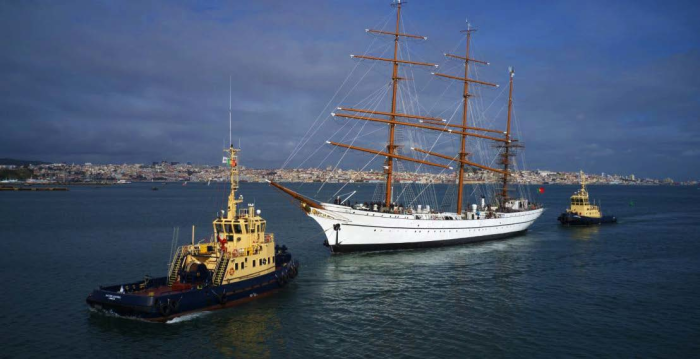
CS110 電界計は、地球の晴天時の電位勾配のカーネギー曲線を再現します。
INESC TEC は、海洋境界層における宇宙大気海洋相互作用 (SAIL) プロジェクトの一環として、ポルトガル海軍と共同で、サグレス スクール シップの装備を支援しています。この船は、大気電気と気候変動に関する先駆的な研究を可能にする真の科学実験室へと変貌を遂げつつあります。
Campbell Scientific は、INESC TEC が地球表面の大気電界の垂直成分を測定できるように電界計センサーを供給しました。計画されている 1 年間に及ぶ世界一周航海で収集された地球物理学的データにより、科学者は気候変動や大気汚染の増加が地球全体の電気回路に与える影響を研究することができます。また、データは長期的な気象モデルに情報を提供し、将来の気候傾向をより正確に予測することもできます。
カーネギー曲線
カーネギー曲線は、地球の晴天時の大気電界の毎日の周期を広く表しています。清浄な空気では、測定位置に関係なく、世界時に従う平均的な毎日の変動を示します。
カーネギー曲線は、大気電気測定を現在でも比較するための基準変動を提供するため重要です。これは、地球上のさまざまな気象擾乱地域に関連する大気帯電の昼間の変動に起因すると考えられています。
ミッション
この航海の科学的目的の 1 つは、地球上の大気の電界の有名なカーネギー曲線を再現することです。元のデータは 100 年前に収集されたため、科学者は最近の気候変動が地球の電気回路の日周サイクルに影響を与えているかどうかに関心を持っています。
このミッションにこの機器が選ばれたのは、Campbell Scientific社製の電界計の精度、感度、現場での耐久性、信頼性の高さが理由です。
システム
Campbell Scientific 社の電界計 CS110 は、研究グレードの高忠実度、低オフセットのセンサーで、局所的な大気電界の垂直成分を測定します。消費電力が低く、重要な雷警報や研究用途向けに設計されています。センサーには、信頼性の高いアース接続を備えた往復シャッター設計が採用されています。高感度のチャージ アンプ電極には、汚染や塩水噴霧に耐える漏れ補償回路が採用されています。
CS110 は、測定、制御、データ処理、最終保存機能のほか、柔軟なユーザー インターフェイス言語 (CRBasic) とさまざまなデジタル通信オプションを提供する CR1000 測定および制御データロガーと統合されています。
期待される結果
海洋環境で収集された地球物理学的データにより、科学者は気候変動と大気汚染の増加が地球全体の電気回路に与える影響を研究できるようになります。また、データは長期的な気象モデルに情報を提供し、将来の気候傾向をより正確に予測できるようになります。
このプロジェクトでは、さらに実験室で分析するために生物学的サンプル(魚類)を収集することで、漁業、海洋活動、さらにはエネルギーなどの分野に世界的に大きな影響を及ぼす海洋の健全性を評価することも目指しています。
旅行が完了した後にフォローアップのケーススタディが行われ、収集された実際のデータと CS110 のパフォーマンスが紹介されます。
参考文献
「INESC TEC がスクールシップ Sagres に大気電気と気候変動の研究設備を装備」BIP Inesc Tec Magazine [オンライン] ポルトガル (2019)。http ://bip.inesctec.pt/en/noticias/inesc-tec-equips-school-ship-sagres-to-study-atmospheric-electricity-and-climate-change/
ハリソン、RG カーネギー曲線。Surv Geophys 34、209–232 (2013)。https ://doi.org/10.1007/s10712-012-9210-2